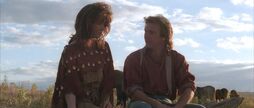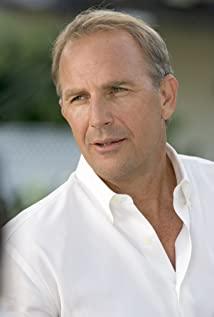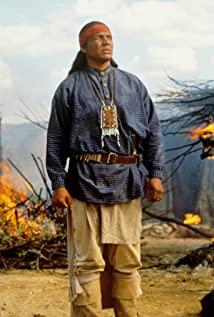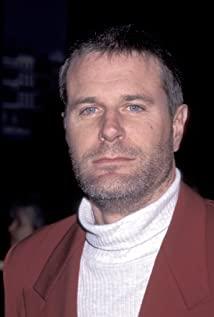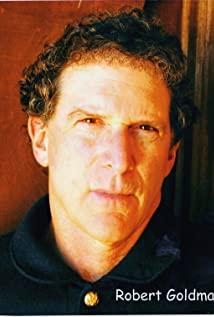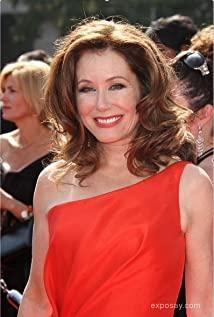In 1990, the virgin "Dances with Wolves" directed by Kevin Costner was released and was nominated for 12 nominations at the 63rd Academy Awards, and finally won 7 awards. The weakening western has injected new blood, arousing the audience's memory and attention to the heroes of the western .
The film continues the narrative style of traditional westerns, and with its unique perspective, it comprehensively displays complex themes such as history, culture, race, etc. Under the historical conditions, the western film has a new core. It is a civilization that disappeared in the roar of the wolf, and it is also an elegy for the history of the westward movement.
01. Iconic Westerns
Secretary of State Henry Kissinger once said:
"The cowboy that Americans love is the one who leads a team of chariots and horses, rides in front alone, with only his horse by his side, and walks alone into the town, nothing else."
In Western films, cowboys represent a spirit of individual heroism, a confrontation between individualism and social order, they are always the embodiment of justice, and are very romantic.
On the surface, "Dancing With Wolves" seems to have broken through the category of individual heroism dominated by white people and created a group portrait of Indian heroes represented by "kicking birds". Dunbar still represents individuals A confrontation between heroes and collectivism.
At the beginning of the film, Dunbar, because he refused to become a disabled person, rode his horse alone and wanted to die;
At the end of the film, Dunbar chose to stay on the western frontier, standing alone in the wilderness, one person and one horse. Even Dunbar and the Sioux hunted and hunted cattle together, and joined hands to resist the attack of white Americans, which can be regarded as individuals and themes confrontation of social order.
From these perspectives, the image of the lone hero in the wilderness endowed by Dunbar is not much different from that of the previous Western films, but because the film starts from the guilt of the white people, the sins they committed in the process of conquering the West were carried out. Unreserved presentation and review , objective and fair , so beyond the scope of traditional Western films.
02. Westward Movement: The Life Path of Heroes
"The hero of the west did not become a hero after fighting the savage Indians, but a postmodern hero who recognized the culture and history of the minority, and tolerated them, and worked hard for the weak."
In traditional Westerns, Hollywood films portrayed Indians as savage, ignorant, and murderous nightmares, while white people, on the other hand, became the messengers of spreading civilization.
However, the history of westward travel in history is "a living history of blood and tears of Indians" , which is very different from the Hollywood movies on the big screen, and the highlight of "Dances with Wolves" is that it subverts Hollywood The traditional concept of , has given objective and fair affirmation to the destroyed and trampled Indians and Indian civilizations.
In the film, it breaks through the white-centered tradition, uses realistic techniques to get rid of the shackles of race, presents this history in an objective and fair manner, affirms and supports the diligence and simplicity of the Indians, and is friendly to them The peaceful way of coexistence among nations was praised.
In the four-hour movie time, the life of the Indians more than 100 years ago is vividly presented. They are simple, kind, living in a harmonious and friendly environment, while the westward movement of white Americans, their brutal killing The Indians destroyed the Indian culture, all of which have been most intuitively reflected in the film.
In ancient times, Indians lived in this vast land, and all whites, including the protagonist Dunbar, were an intruder.
Dunbar Zhongwei, experienced in hundreds of battles, fought bloody battles on the battlefield, and almost lost his life. However, in his bones, he was a young man full of literary and artistic temperament, carrying a notebook with him to record his life.
With the appearance of the Indians, Dunbar scared the Indians to "kick the bird". Such a meeting was extremely embarrassing.
Perhaps, in the eyes of white people, Indians are equated with savagery and ignorance, so they have a natural sense of superiority in their hearts;
What Dunbar didn't know was that, as a white man, in the eyes of the Indians, he was an aggressor, but because the white man had more terrifying weapons in his hands, he fought for more right to speak.
Dunbar was a well-bred military officer who longed for peace. When he blended into this group of kind and friendly, hard-working and brave Indians, he lived, hunted, celebrated, and ate with them. He gradually learned about the civilization of the Indians. In a war against foreign invasions, Dunbar was named a national hero of the Sioux.
As a hero, the protagonist is of course helping the weak for justice. He threw himself into the camp to protect Lakota against the US military and headhunters, and trekked with his wife in a steep canyon full of ice and snow, seeking to bring the truth to light. all over the world. These plots are a metaphor for the rough and difficult path of human beings in pursuit of justice and peace. However, this is also the life path that heroes cannot avoid.
03, the civilization that disappeared in the wolf howl
Whether in the East or the West, whether it is "The Wolf and the Lamb" in Aesop's fables or "Mr. Dongguo and the Wolf" in the Chinese style, the wolf is portrayed as a ferocious, cunning and ruthless creature.
However, in the movie "Dancing With Wolves", this wolf is a lonely and desolate wolf, and as the plot develops, it appears more than a dozen times in the film.
In ancient times, it was believed that wolves could understand human speech, and if they were disrespectful to wolves, they would take revenge.
In the Indians or some European cultures, the wolf is the role of the protector and the elder who dominates the animals. Many Indians admire the wolf's excellent characteristics, courage and wisdom. They have fast speed, extraordinary explosive power, rich body language and developed sense of smell, and can get along with all things in order to survive and live.
However, after the white invasion, the ecological balance here was madly destroyed, and of course the eradication and struggle against wolves was also included. Therefore, the struggle between the settlers and the wolves began from then on.
At the beginning of the film, the howling of wolves circled in the wilderness, and at the end, the Indian civilization also drifted away from the howling of wolves. The appearance of the wolf is the film 's memory and tribute to the lost Indian civilization.
04. Wilderness: The Land of Freedom and Rebellion
In the traditional Western civilization, wilderness is an important spiritual symbol element. In Christian literature, the wilderness is regarded as a portrayal of the fate of being "abandoned by God", and the homeless see it as a homeless activity venue .
Since the romantic literature of the 19th century, with the collapse of the traditional value system of Westerners, the escape and rejection of traditional civilization, and the tiredness of traditional thinking, the wilderness has become a poetic space corresponding to reality.
In the movie "Dancing With Wolves", the wilderness is the most important and active place. The most important activities of the protagonist Dunbar are related to the wilderness, that is, coming to the wilderness, living in the wilderness and leaving the wilderness.
The wilderness is not only an important witness of Dunbar's understanding of the Indians, establishing friendships with them, finding love, questioning the behavior of white people, and hating and resisting, but also the life course of Dunbar's self-transformation and self-growth.
In the wilderness, he can dance with wolves with a bonfire, lie leisurely on the grass and watch the rising sun;
In his personal identity, he gradually accepted the cultural atmosphere of the Indians, transitioned from a white war hero to the savior of the Indians, and met the brutal and selfish white people who defected;
On the spiritual level, Dunbar's defense of the Indians became an active gesture of goodwill, and he established a deep friendship with them. extreme environment challenges.
With the development of the plot, the wilderness has also been endowed with new symbolic meanings. It has changed from the original wilderness artistic conception to a flourishing paradise with a sense of rebellion. It has changed from an exiled "pessimistic attitude" to a friendly, tolerant, confident An optimistic "positive face".
05. Epilogue
"After 18 years, the Sioux were forced to give up their lands for generations, and this era is an eternal sobbing dirge for the Indians."
With such an epilogue, the movie is also nearing its end.
In this majestic movie, there is no strong visual impact brought by traditional Hollywood movies, and no eye-catching special effects and productions in sci-fi blockbusters. However, its atmosphere is delicate and euphemistic. The unique vision of the white visitor shows us everything about the Indians in the American West at that time.
History has long gone, but the nostalgia for the civilization that has disappeared will never stop.
View more about Dances with Wolves reviews




